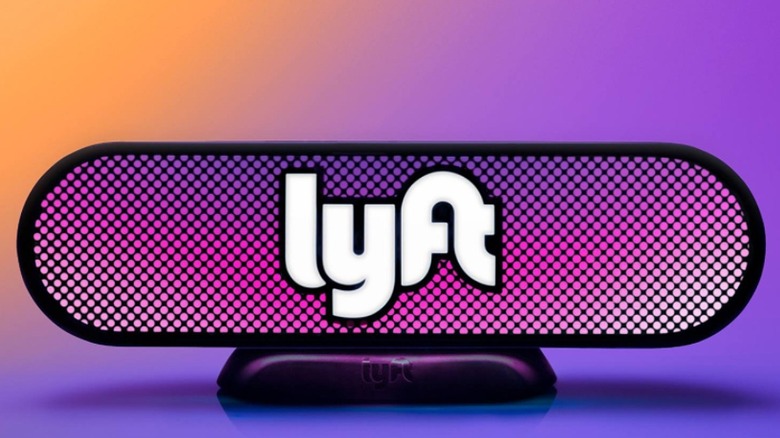Lyft Just Jumped On The Food Delivery Bandwagon
A long time ago in a galaxy far, far away (or maybe it just seems like that from where we stand in the new post-pandemic normal), a group of young law school graduates, all of whom had found themselves eating at their desks too many times to count, formed a company called Seamless to help make the task of having food delivered simpler (via American Express). The year was 1999, and although Seamless has now merged into GrubHub (via ABC News), its ethos lives on in food delivery service apps such as GrubHub, UberEats, and DoorDash. And this has never been more true than in the wake of periodic pandemic-related lockdowns, which, at various times, and for various lengths of time, have eliminated the option of dining inside a restaurant, at least temporarily.
The good news is that the restaurant industry and the people who love it are demonstrating resilience. As people throughout the U.S. have found themselves settling into a routine that seems to involve fewer trips to restaurants, but more options for food deliveries (including groceries), more and more restaurants have jumped on the delivery bandwagon. The only downside to the myriad available choices is managing all that info, and that's where food delivery service apps have earned their keep. Capitalizing on the obvious utility of centralizing restaurant and ordering information, food delivery services make ordering in faster, easier, and, well, "seamless" to do on repeat. Is it any wonder that ride-sharing network Lyft just jumped on the food delivery bandwagon?
You may be able to order your food and have it delivered via Lyft now
Lyft has been Uber's major competitor when it comes to the ride-sharing network model that has been flourishing in American transportation since the end of the early aughts (via Startup Talky). However, Lyft had yet to toss its hat into the food delivery service ring. Yesterday, the company made its move. On Tuesday, December 14, Lyft entered into a partnership with a company called "Olo," which helps restaurants streamline their online ordering system with services such as DoorDash, GrubHub, and UberEats (via Food & Wine).
Although Lyft will not have its own ordering platform, which Justin Paris, head of Lyft Delivery, cites as evidence that Lyft is not directly competing with UberEats (via Food & Wine), Lyft drivers will have the opportunity to take on restaurant deliveries through Olo's platform (aptly named "Dispatch"). "The addition of Lyft to the Dispatch network not only expands delivery coverage for our brands, but drives competitive pricing at the benefit of guests and brands," Shalin Sheth, VP and GM of Dispatch for Olo, stated in a press release (via Business Wire). At the same time, this structure protects the relationships that customers have with the restaurants they like to order from, by letting them do so directly — albeit with Lyft as their transportation service of choice.

